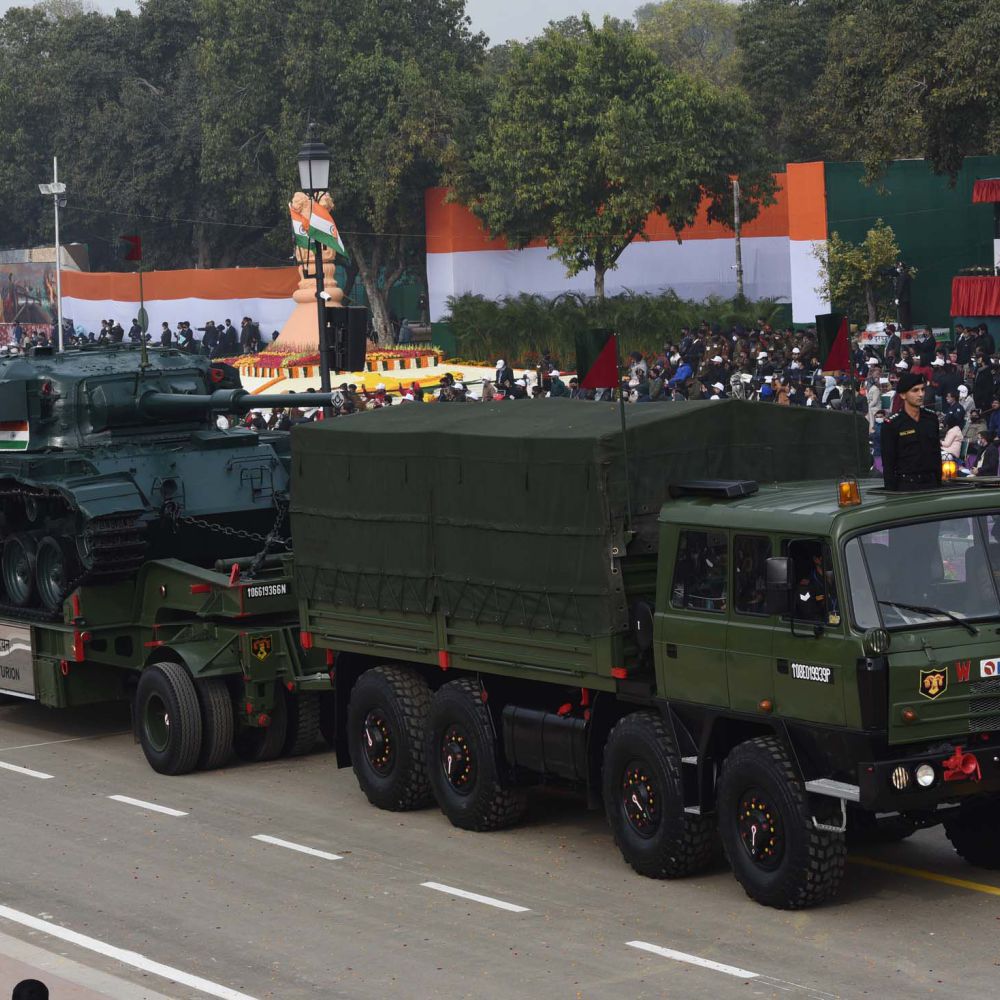“The industry must possess reserve finances to ensure resilience in the system to sustain at least the initial disruption period till alternate arrangements are made. It is interesting to learn that the supply chain in the armed forces has inbuilt resilience by advanced planning as also having clauses in the procurement manuals, which permit placing of repeat orders.” A firm believer in ‘Solution is the sole option and failure is not an option in the Armed Forces, Lt Gen Balbir Singh Sandhu speaks to Celerity about the experiences & expertise of managing the toughest supply chain – the Army and achieving the impossible feat.
How do you view the supply chain from the defence parlance and how different is it from the other sectoral supply chains?
It is no secret that the function of Supply Chain Management and logistics originated from the armed forces when invading armies had to plan their sustenance for the period of the campaign, which was later adopted and refined by the industry. Centuries back, the communities lived on a barter system within the localized commercial dealings. It was only the invading army who had to plan their logistics while operating away from their bases. They used to think on the lines of self-containment as to how much to carry with them. They had to think about the lines of the transportation means they would use if it would be the donkeys, bullock carts, camels, or any other means of transport. In essence, the world has learned the concept and the execution of the supply chain from the Army.
In due course of time, the global supply chains got interconnected by sea, air, and communication, and technology played a transformative role in the case of the corporate and the commercial supply chain vis-à-vis the army. These changes in the corporate supply chains have far outstripped the army supply chain because the armed forces have to be conscious of the security needs, which is even the case with the advanced army like the US. However, armed forces, on their own part, have been injecting technology to ensure better inventory control, transportation management, etc.
During my stint as the Director General of Supplies & Transport, I received a number of proposals to track our transport using advanced technologies such as GPS and other tools. While we have no such adverse relation with companies managing such technologies, we did not want to expose ourselves to somebody else to track our base locations because one must realize that logistics give away the size of the armed force and if I can track the realtime location of my vehicles through such Apps, then for sure, anyone else too can have this confidential data, no matter how failproof the system is. That’s precisely the reason that in the defence supply chain, we have to use our conventional means of navigation and not the GPS. That’s the reason we've been a little slow in transforming the supply chains.
The second biggest difference is, in the case of corporates, you work on profits and just-in-time logistics. In fact, interestingly, recently I attended a seminar where one of the officials highlighted that nowadays our management doesn't say cut cost, they say vanish the cost and that the supply chain cost must be eliminated. On the contrary, in the case of the army and the defence, you work on just-in-case logistics. We cannot afford failure in the combat zone. That’s why we have reserves at the unit level, at the formation level right till the end because we can have no reasons to fail. There are no runners-up in WAR and logisticians certainly don’t want to be the cause of any Indian army’s setback. These are the major differences in the armed forces supply chain vis-a-vis the corporate supply chain.
One more important point I would like to bring to your notice is that at times of war, the challenges are even greater because, at that point in time, their consumption requirements shift from basic necessities such as food to ammunition and fuel for vehicles. Our job has always been to think about the unprecedented demands that may arise during such situations, plan the logistics in advance and be ready to serve the battalion with all their desired requirements on time every time. The art of logistics is supposed to be putting the right material in the right quantity at the right place at the right time.
What are the unique aspects of a military supplier chain?
First & foremost is that the Army supply chain works on a just-in-case model. The second and the most important aspect is the diversity of the terrain we have to cater to. It can be glaciated terrains like Siachen or the island territories like Andaman Nicobar or even deserts. So, the varied terrain and the expanse of logistics are what make our lives most exciting and the most challenging at the same time. Additionally, there are hinterland supply chains, such as Delhi or Mumbai. In the case of armed forces, while initially, we would be moving goods via train from the production facilities, then by vehicles of bigger sizes, then by vehicles of smaller sizes. During the last mile, we might have a transfer point to transport goods onto animals. The kind of terrain decides the mode of transport because, at some places, we also need to airdrop the goods where practically there is no means to even travel. In the case of islands like Andaman Nicobar, the last mile connectivity can be via ship. Another important aspect is we rely heavily on local resources to the extent feasible because that's the best and the cheapest way of doing things. It also allows the local economy to grow. Peculiarities are many and complications of military logistics are for more than corporate logistics. Having said that, the basic principles of logistics remain the same. You can’t replace forethought, planning, flexibility, simplicity of the plan, use of information, and communication from any supply chain as they are the foundation pillars of any supply chain. The principle stays the same and there is a lot to learn from each other.
How do the armed forces manage such a huge task?
It is an evolutionary process. Just remember that armed forces have not come into being overnight and we have certain procedures, which we have inherited historically, and we try to improve upon them over a period of time. For instance, there used to be a longer response time because of physical signatures needed at all points of authority. Nowadays, it has been completely digitized. Armed forces primarily work on a push model and not a pull model. If I am in Delhi as the head of my service, it is my duty to procure things and make them reach within easy reach of people deployed in J&K, North-East, Andaman & Nicobar. With better communication, managing such tasks is a bit easier, and we have set SOPs by which we ask the formations to give their demand far in advance, say a year ahead or so. This year, we will make the compilation of the demands for the next year, which also considers if there is any change of troops. We follow a very detailed and meticulous system with the flexibility to change at any given point. It is an interactive process that ensures seamless logistics. We monitor at each higher level. There are authorities at all levels responsible for planning, procuring, and dispatching demands at the last mile. The timelines are well chalked out and we are aware not to fall beyond a certain timeline. Earlier we used to give extensions to our suppliers, but I took a step and discontinue the practice because you might get delayed in reaching goods to the last mile and everyone is well aware of the fact that one point failure can have a catastrophic impact on the whole chain. In short, we keep on updating and bringing in innovations at every single point and process as much as we can to not only ensure smooth supply chain ops but also ensure economies of scale.
Inventory management plays a huge role in the scheme of things. How do you do that?
For the last few years, we have been working on deploying automation. For instance, with better connectivity between Delhi and Chandigarh, Chandigarh and Ganganagar, or any other forward post, we are having the ability to see through the inventory at various locations so that we can put that push model into play. We also work at reducing the inventory by outsourcing and delegating powers for the localized requirement of certain items. While inventory management is an issue, which will always be a challenge, authorities at various levels are empowered to give the local purchase sanction of an item, which could not reach through the central procurement. As time goes by, the challenge is visibility in the next echelon, that is ahead or behind.
What are still the prevailing challenges in army supplies on borders and how should the government work on them on priority to ensure a seamless supply chain?
Anything which we do against the grain of population or against the grain of civilization needs more effort. The mountains are supposed to be lived in by a very sparse population, all in nature, however, because of geopolitical compulsions or border disputes, we are now required to put a large number of troops in an unnatural environment. If we want our troops to combat in such conditions, they need to be well fed, well clothed, need to be comfortable, and above all, they need to feel cared for so that their morale is high and that's what gets you back the peaks like Kargil and others. To do this unnatural deployment, we need to move a higher quantity of goods to remote areas and let me assure you that for a place like Ladakh and other mountainous areas, there is always the provision of advanced winter stalking. For that, the planning at the center starts more than a year in advance.
As you move towards the border, you start spreading laterally and the requirement is less at each place. Some areas are so inaccessible that even a jeep can’t move. So, you have to move goods by Air. At times, even a helicopter can't land, so you have to do an airdrop in the mountainous areas and then there are valleys where at times, half the stuff goes down and never gets recovered. The challenge for the government today is working on improving the infrastructure in the border areas and I have always been of the view that you have to use such infrastructure, both for the military and the civil population, and once you start doing that, there will be better integration and they will be economy in logistics.
At the same time, what we have been seeing right now is that while the government has been emphasizing a lot on infrastructure development in the North-Eastern border areas, there has been again a challenge of eco-conservation and the growing instances of landslides. It's a catch-22 situation. In 2017 as the head of the service, when I visited the same area, I was shocked to see the number of roads that have come up over there lately. We have to become extra conscious as to what steps can we take to rejuvenate the jungles and the environment so that they do not put us in trouble someday. We have just seen what happened in Manipur recently.
When I was posted in Manipur as the Colonel in the insurgency area, the troops were deployed in penny packets. As per the army system, they are all supposed to come and pick up their rations for daily needs 2 or 3 times a week from a certain place and they are operating in very remote areas. There is only one route, and the militants can easily track their route and time of picking up the daily supplies, which poses a greater danger of an ambush. There is a pattern in the army that convoys that deliver such goods to the troops get ambushed. To ultimately try and break that pattern, we thought out-of-the-box. The supplies which we used to give for 15 days, we started giving for one month and there was no set day for dry ration, but for fresh stuff, we told the contractor to deliver it at every post because a civil vehicle can easily move in those areas. Outsourcing the delivery was a very simple thing, through which we could break that predictability pattern. The quality control, which is enforced by the experts, is now performed by the local suppliers, which has become a very fine balance. I firmly believe, “Solution is the sole option and failure is not an option in the Armed Forces.”
There have been many lessons that corporates can learn from the defence supply chain. Could you elaborate on a few, that they can really take on and have a very strong supply chain network?
First, let me tell you what the military can learn from corporates. The military can obviously upgrade technology as is being used by the corporates and have more tangible outcomes. On the other side, having a contingency plan is what corporates can learn from the Army. The covid-19 pandemic is the biggest proof of why corporates need a contingency plan and risk assessment capability.
While corporates are ahead in adopting new age technology, there has to be a certain human angle to the supply chain where they must reward and acknowledge the efforts of the critical players in the entire supply chain. Profits are important, but companies must reward these pillars of the value chain, which could at times, just be the lorry drivers. Additionally, the push model should be implemented, to an extent, in the corporate world to push things forward to the next line with better cooperation. Sense and respond kind of a model should be adopted so that there is a better distribution of commodities, which are in short supply.
After the 2011 tsunami in Japan, Cisco and Boeing revisited their supply chain to mitigate the risk of depending on the source of supply located in one region. There is a need for diversification of sources of supply and building provisions to ramp up the capacity of alternate sources when the main one gets disrupted. The current crisis has also highlighted the need for near sourcing and indigenization because businesses dependent on global sourcing are likely to be impacted more during such global crises, the frequency of which is now on the increase.
As we grapple with this historic crisis, a lot is expected to change in all spheres, and the supply chain needs to transform the most in a globalized and interdependent economic environment. Digitization and innovative use of technology will lead the change. Manufacturers may become less materialistic and go for multiple procurement sources even if that is not the most economical choice. Resilient, lean, and agile supply chain systems backed by technology will be a matter of necessity and not choice in case businesses must survive future shocks and disruptions.
What, according to you, is the mantra of a successful supply chain?
For me, forethought, planning, and flexibility are the top three levers of a successful supply chain. If you plan in advance and be flexible with that plan, you will succeed. It will result in economy and higher customer satisfaction. A better-integrated supply chain with the national supply chain will be more reliable and sustainable, remember it is the resilient supply chain, which can ensure effectiveness for the sustainable period.
Kindly share with us the indispensable role that the Air Force plays in logistics.
Air Force has always played a very critical role, where at times, the pilots have to fly very close to the Line of Control, endanger themselves, and land in certain forward airfields, which are not well-equipped but that is the acumen of Indian pilots who understand their role to look after the troops that are deployed in more difficult areas; and we have seen them showcasing their mettle during Kargil and other operations at the higher altitude. The ability of the air force pilots to go beyond the stated heights that their equipment can go is the stuff of legend and they've often crossed the barriers and put their life at risk but made sure the furthest most soldiers get what they require.
The limitation arises as they move towards higher altitudes, which in particular, do not allow aircraft to lift the number of loads they would normally be able to lift because there is a lot of pressure on the aircraft during the daytime. In order to achieve this challenging task to send a higher amount of cargo, the people in-charge of delivery ops, load the goods at night so that the aircraft is ready to take off in the early morning before the sun rises. Early morning, there is no such restriction for the aircraft to be able to lift load and they can go the full load. The effect of high altitude and heat comes into play at around noon time.
I, myself, have been witness to the boldest moves and maneuvers by the pilots; they respond very well, and they continue to perform these duties in the high-altitude areas. Interestingly, I had the opportunity to witness this gigantic task up, close & personal. The aircraft landed with around 30 people in the morning on glaciated terrain, the moment we started the return journey at around 11 am, the Air Force officer informed me that the aircraft can’t carry more than 4 passengers including the pilot & the co-pilot. It is just one of the incidences demonstrating the Air Force’s might in ensuring supply chain ops and thinking beyond the unthinkable to deliver goods in time.
Would you like to give any suggestions to the government in ensuring seamless logistical operations?
I think the government is already aware and is working towards integrating interservice logistics and national and military logistics, which is the part of the process for years. I would only say that in order to achieve economies at the national level and to achieve better growth for the national economy, integration of military and civil logistics, integration between the various ministries and various services – Army, Navy, Air Force, must be given the highest priority so that we get better value for every money spent and offers us a better degree of readiness.
What are the global best practices that you feel India should emulate in terms of the supply chain?
The infusion of technology will be the biggest catalyst. While you can’t try to have a one-size-fits-all solution for the Army as the Indian defence challenges are totally different from the ones faced by the West. We are surrounded by two biggest adversaries who are nuclear powered, who also collude with each other, and India's growing economy and critical stage threatens both of them. We have to continue to integrate and sustain ourselves so that we can grow as a country. If I had to sum up national security in one word, it is the Economy and if the economy is doing well, even one and a half percent of the economy will make much more money for modernization.

Categories

Magazine Editions






















